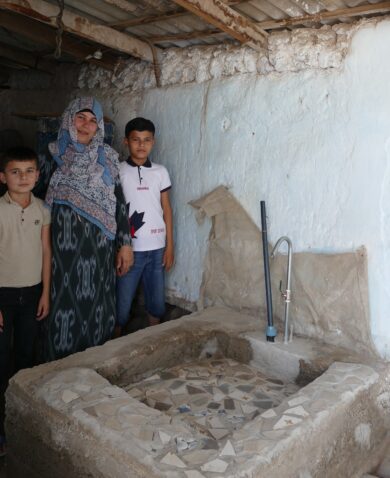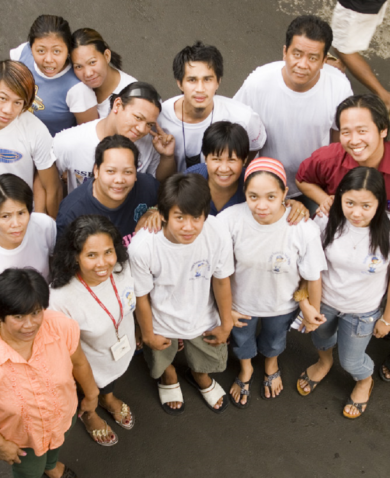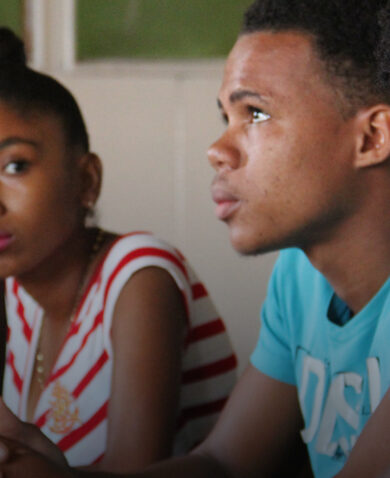
Know Your SDGs: The Role of Sustainability and Youth in Economic Growth
July 23, 2015 | 3 Minute ReadNearly half the world's population is under age 25, and these young people will be key to driving sustainable economic development and growth.
Proposed Sustainable Development Goal (SDG) 8 is to “promote sustained, inclusive and sustainable economic growth, full and productive employment and decent work for all.” For those who are familiar with the existing Millennium Development Goals (MDGs), this language may sound familiar. Under Goal 1 of the MDGs, the second target is, “achieve full and productive employment and decent work for all, including women and young people.”
So what is really new with the SDGs in the world of economic growth?
The small verbiage changes from the MDG target to SDG Goal 8 send a strong message: a message of sustainability. Sustainable development supports the idea that solving the world’s most challenging development issues takes an evolving combination of economic, social, and environmental considerations and goes beyond borders. Economic growth is not enough on its own, and coordination at scale is needed. The inclusion of these concepts under SDG 8 is a promising sign that the way the development community views economic growth is advancing to take a more inclusive and holistic approach.
As I read through the sub-goals for SGD 8 in search of evidence to support of the new sustainable approach to economic development, I see an evident trend in the inclusion of youth as a means to the overall achievement of the goal. For example:
- Sub Goal 8.5 states, “by 2030, achieve full and productive employment and decent work for all women and men, including for young people and persons with disabilities, and equal pay for work of equal value.”
- Sub Goal 8.6 states, “by 2020, substantially reduce the proportion of youth not in employment, education or training.”
- Goal 8.b notes, “by 2020, develop and operationalize a global strategy for youth employment and implement the Global Jobs Pact of the International Labour Organization.”
To me, it’s no coincidence that with the introduction of sustainability comes an increase in the influence of youth. More than 3 billion people — nearly half of the world’s population — are under the age of 25, and almost 90 percent of young people live in developing countries. I believe that this population is the future for promoting sustainable development, particularly economic development. Likewise, I am pleased to see that the SDGs prominently include youth to reach their overall goal for sustainable economic growth and adequate employment for all.
The international development community hopes that the more we support and engage youth in developing their own economies, the more they will be invested in ensuring economic sustainability. But how do we break lofty international goals down into something that works in young people’s reality? A lot of it comes down to fostering the right environment for youth to empower them and help them develop skills, knowledge, and networks. As Tetyana Sydorenko, a Ukrainian graduate student at American University and emerging economic growth specialist, explains: “…Youth will lead economic development and ensure its sustainability through two key components: increased capacity and agency. As an international graduate student, I found that a vital part of my learning experience is being exposed to a wide range of perspective from my peers, professors, mentors and supervisors, thus being in an environment where I can learn the best practices of the past, keep an open mind for new ideas and engage in a forum for brainstorming. I also found that an important driver of youth’s contribution to economic development is their ability to enact agency and act upon the new ideas in order to improve their lives and those in their communities.”
In other words, capitalizing on and leveraging young people’s drive and motivation are essential to ensuring their participation in and the sustainability of economic development. USAID/Moldova’s Competitiveness Enhancement and Enterprise Develompent (CEED) program is a good example of engaging youth in economic development programming as a means to ensure sustainability. CEED I and CEED II carried out promotional campaigns, technical trainings and start-up weekends to engage youth in Moldova’s fastest growing industry, information technology (IT). Since 2010, promotional campaigns have persuaded more than 5,700 future graduates to consider a career in IT. As of 2013, IT exports from Moldova had grown 10 fold to reach nearly $240 million. Additionally, employment in the country’s IT sector has grown 35 percent over 10 years. The CEED programs proved that youth engagement was necessary for the Moldovan IT sector to continue growing at a rapid pace.
SDG 8 is broad and covers much more than the role of sustainability and youth in economic growth. But I believe youth are a positive force with a strong chance to embody the role of economic development in the SDGs and drive change forward. Youth will be one of the most prevalent populations benefiting from the SDGs in the decades to come — so let’s trust them to help make the goals happen. Let’s work with young people now to achieve the positive changes we want in the world, and specifically support them to implement sustainable developments in their own economies.


































